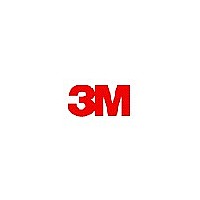3M7503 3M, 3M7503 Datasheet - Page 16

3M7503
Manufacturer Part Number
3M7503
Description
3M7503 HALF MASK (LARGE)
Manufacturer
3M
Datasheet
1.3M7502.pdf
(20 pages)
Specifications of 3M7503
Safety Category
CSA Standard Z180.1
Respirator Type
Valved
Face Mask Style
Half Mask
Lead Free Status / RoHS Status
na
Negative Pressure User Seal Check (with 7093 Filters)
1. Using hands press filter covers toward facepiece and inhale gently. If you feel facepiece
2. If faceseal air leakage is detected, reposition respirator on face and/or readjust tension of straps
If you cannot achieve a proper seal, do not enter contaminated area. See your supervisor.
Note: Before assigning any respirator to be worn in a contaminated area, a qualitative or
quantitative fit test must be performed per the local requirements or OSHA Standard 1910.134.
Quantitative (QNFT) and Qualitative (QLFT) Fit Testing
The effectiveness of a respirator will be reduced if it is not fitted properly. Therefore, either
quantitative or qualitative fit testing must be conducted prior to the respirator being issued and used.
Note: Fit testing is both a U.S. Occupational Safety and Health Administration (OSHA) and
Canadian requirement.
To conduct QNFT with the 7501 *(37081), 7502 *(37082), 7503 *(37083) Half Respirator Facepiece,
place a 3M™ 601 Fit Test Adapter on either side of the half facepiece. Place a 3M™ 2091 Filter or
3M™ 7093 P100 Filter on the 601 fit test adapter and the other side of the half facepiece.
Qualitative Fit Testing (QLFT) can be conducted with any approved particulate filters. The 3M FT-10
(sweet) or FT-30 (bitter) QLFT fit test can be utilized to conduct the fit testing. For further
information concerning QLFT or QNFT contact 3M OH&ESD Technical Service toll free in U.S.A., 1-
800-243-4630 or 3M at your locations (see Worldwide Locations section). In Canada, call Technical
Service at 1-800-267-4414.
INSPECTIONS, CLEANING AND STORAGE
Inspection Procedure
This respirator must be inspected before each use to ensure it is in proper operating condition. Any
damaged or defective parts must be replaced before use. The following procedure is
recommended:
1. Check the facepiece for cracks, tears and dirt. Examine the inhalation valves for signs of
distortion, cracking or tearing.
2. Check that the head straps are intact and have good elasticity.
3. Examine all plastic parts and gasket areas for signs of cracking or fatiguing and replace if
necessary. Remove the exhalation valve cover and examine the exhalation valve and seat for signs
of dirt, distortion, cracking, or tearing. Replace the valve if necessary. Secure the valve cover prior
to use. (Fig. 17)
collapse slightly and pull closer to your face with no leaks between the face and facepiece a
proper seal has been obtained (Fig. 15)
to eliminate the leakage.
16










